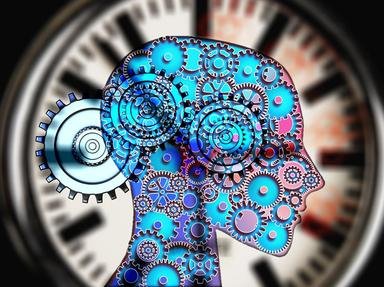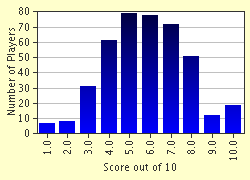Quiz Answer Key and Fun Facts
1. Although it was not recognised at the time, the first known description of AD/HD was in a children's poem written in 1845. German physician Heinrich Hoffman (1809-1894), failing to find suitable books to read to his young son, wrote a series of cautionary poems which were collected in the book 'Der Struwwelpeter'. The book, translated into English by Mark Twain under the title of 'Slovenly Peter', achieved some popular success. Which poem from the book is said to describe a child with AD/HD?
2. English paediatrician Sir George Frederic Still (1868-1941) is acknowledged as the first to describe a disorder approximating AD/HD. In 1902 he presented a series of lectures to the Royal Society of Physicians in London detailing observations of children in his clinical practice. The children displayed a range of symptoms including aggressiveness, defiance, lack of attention, and deficiencies in inhibitory volition and 'moral control'. What did Sir George believe caused these behaviours?
3. In 1917-18, an epidemic in Europe and the US is credited with sparking research interest into hyperactivity and associated disorders. The notion was that survivors displayed symptoms similar to AD/HD. What was the disease?
4. The most common pharmaceutical drugs for AD/HD treatment are somewhat controversial. They come from which general group?
5. Although there are many psychological tests for AD/HD, a simple blood test can determine the presence or absence of the condition.
6. Diagnosis of AD/HD depends on a patient being rated against three categories of symptoms. Two of the categories are Inattention and Hyperactivity. What is the third?
7. The fourth edition of the American Psychiatric Association's "Diagnostic and Statistical Manual of Mental Disorders" (DSM-IV) defines how many types of AD/HD?
8. AD/HD is thought to be at least partly caused by an imbalance of two neurotransmitters in the brain. One is norepinephrine (also known as noradrenaline), what is the other?
9. Most children grow out of AD/HD as they reach adulthood.
10. What quiz of this nature could end without a "famous person" question? So, which of the following is *not* popularly presumed to have had AD/HD?
Source: Author
ing
This quiz was reviewed by FunTrivia editor
crisw before going online.
Any errors found in FunTrivia content are routinely corrected through our feedback system.

